The following medical formulary was compiled and is recommended for use by the Association of Avian Veterinarians,
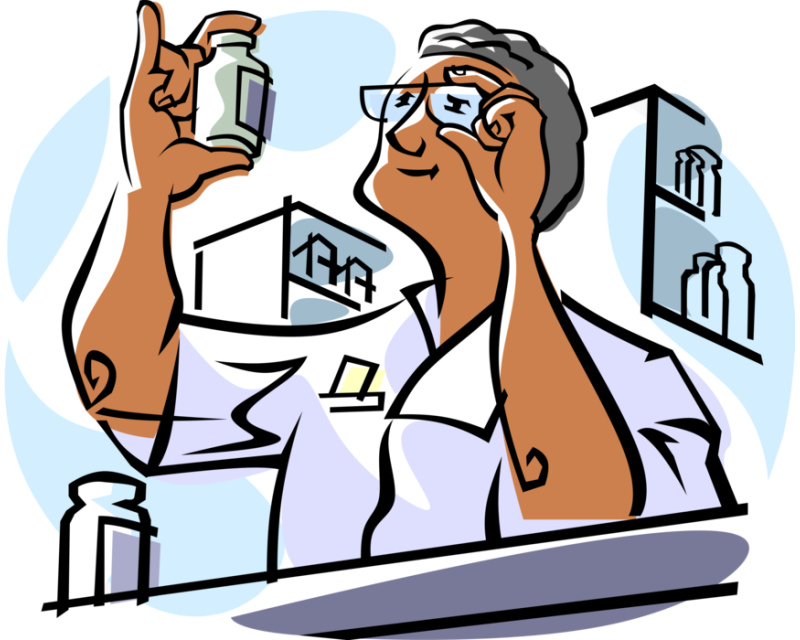 General Considerations
General Considerations
Purpose: The purpose of this formulary is to provide a concise, accurate description and proper dosage of the common drugs used in pigeons. Experience has shown that various sources provided vastly different dosage levels. Some of which were so high that they were toxic, others so low that they weren’t effective. The dosages and other information in this publication were gathered from multiple knowledgeable sources and are the proper dosages and information to the best off our knowledge. It must be noted, however, that some of this information is based on experience of individuals, not carefully controlled scientific studies. This is especially true for the drugs listed that are not specifically made for or approved for use in pigeons.
Dosage Levels; You will find many of the drugs listed to be given in mg/bird. mg/pound, or mg/gallon, instead of teaspoon or tablespoon per gallon. The reason is that many of the drugs come in various concentrations. Because of that, a teaspoon of one preparation doesn’t equal a teaspoon of another preparation of the same drug. This often results in toxic or ineffective levels being used. This poses no problem for most of the prescription drugs as they are usually listed in milligram equivalents. However, some OTC (over the counter) preparations do not give you the number of milligrams per teaspoon. When this occurs you, must figure that out on your own. The following is an example:
You buy a drug OTC that comes as a powder in a plastic bag. it tells you that there are 10 grams of the drug in that bag. Empty the bag and measure how many teaspoons of powder you have. You find that you have 20 teaspoons. So you have 10 grams/20 teaspoon or .5 gram/tsp. .5 gram=500 mg (see chart) so your drug has 500 mg/teaspoon. Figure how many teaspoons per gallon you need from that. (i.e. If you need 1000 mg/ gallon, you need 2 teaspoons per gallon. You buy a drug OTC that comes in a liquid. You are told that it is a 20% solution. That means there are 20 grams of the drug in every 100 ml of solution. There are 20 teaspoons in 100 ml (see chart), so there is one gram of drug in every teaspoon of liquid in the bottle. One gram is equal to 1000 mg so you have 1000 mg of drug per teaspoon. Figure out what you need from that.
Dosage Range: Many of the drugs give you a dosage range. This is done for two reasons:
1. The lower dose may be used in mild infections but the higher dose may be needed in more severe infections.
2. Since most drugs are given in water, the amount of the drug a pigeon gets varies with how much he drinks. We assumed that in hot weather 30 birds drink a gallon/day and in cold weather 60 birds drink a gallon per day. The low dose is figured on the 30 bird/day consumption level and the high dose on the 60 bird/day consumption level. This is a very important principle to keep in mind with the more toxic drugs such as dimetridazole (emtryl).
Dosage Intervals: It is, important to give the drug for the proper length of time. Failure to do so often results in poor response, relapse of the disease after the drug is stopped, and production of resistant strains of organisms.
Diagnosis: Establishment of a proper diagnosis before treatment begins is extremely important. Shotgun treatment often produces poor results, delays recovery to when the proper drug is finally found, and often produces drug-resistant bacteria and parasites. We can not stress strongly enough, in the case of antibiotics, that a culture and sensitivity be done to make sure the antibiotic used is needed and effective. Just because a drug is noted to be effective against many cases of E. coli doesn’t mean it is effective against all cases. More and more drug-resistant bacteria occur every day and can best be treated when proper diagnosis are used first.
Medications and Associated Items
Some of the Medications and associated items for proper sanitation, especially during a disease outbreak are listed here The most important thing to remember is:
**DON’T MEDICATE UNLESS YOU KNOW WHAT YOU ARE MEDICATING FOR!!!!**
FOR COCCIDIOSIS Albon Powder & Liquid Amprol (corid) Sulmet, Pints & Gallons Vetisulid Sulquin 6-50
FOR PARATYPHOID Albon(Agribon) Aureomycin Soluble Aureomycin Concentrate Aureomycin Tablets, 25 mg. Terramycin Soluble Sulfamethazine Vetisulid Sulquin 7-50 Acid Loft Dressing Sal-Bac Paratyphoid Vaccine, 50 or 100 dose Liquimycin LA 200 Feed Mate 68 Germex Nolvasan Sani-Coop
FOR E-COLI Albon Vetisulid Apralan Feed Mate 68 Germex Nolvasan Sani-Coop
RESPIRATORY DISEASE Albon Aureomycin Soluble, Concentrate or Tablets Terramycin Vetaquimycin Tylan Soluble or Injectable Sulmet Gallimycin Soluble LS 50 Ivomec (Air Sack Mites) All Vitamin Products Liquimycin LA 200 Combiotic Tylan 200 Germex Nolvasan Sani-Coop
CANKER Spartix Tablets Emtryl Flagl Ridzol Nolvasan Germex Sani-Coop Copper Sulfate Ren-O-Sal
WORMERS Panacur Telemintic Droncit Ivomec Ivomec Drench Tramisol Tablets Tramisol Powder Piperazine Wormer Loft Scrapers
PMV I Vaccine
Antibiotic/Antimicrobials
Name: Amoxicillin Trihydrate (Amoxil, Amoxi-drops, many others.)
Description: Amoxicillin is a semisynthetic analog of penicillin with a broad range of bacterial activity against many gram + and gram – bacteria. Usage: Amoxicillin can be used with any bacterial infection showing susceptibility to the drug. Adverse reactions: None seen with any frequency. Dosage: 25 – 50 mg/Bird divided daily or 1500 – 3000 mg/gallon of water for 10 – 14 days. Comments: Amoxicillin is very effective, well absorbed, safe, and well tolerated in the pigeon.
Name: Cephalexin (Keflex. many others)
Description: Cephalexin is a member of the cephalosporin group of antibiotics and is effective against a broad range of gram + and gram – bacteria. Usage: Bacterial infections shown to be susceptible to cephalexin. Adverse reactions: None seen with any frequency. Dosage: 25 – 50 mg/bird or 750 – 3000 mg/ gallon of water for 10 – 14 days. Comments: Well tolerated by pigeons and readily accepted in the water. Reported as very affective against streptococcal infections.
Name: Chloramphenicol (Chloromycetin, many others)
Description: Chloramphenicol is a bacteriostatic antibiotic used against a broad range of gram + and gram – bacteria. Usage: Bacterial infections shown to be susceptible to chloramphenicol. Adverse reaction: None seen with any frequency. Dosage: 30 – 50 mg/bird, 2 – 3 times/day intramuscularly. Ophthalmic ointment or drops are useful for conjunctivitis used two times daily. Comments: This drug is broken down so quickly by crop flora, adequate blood levels are hard to attain orally.
Name: Doxycycline (Vibramycin)
Description: Doxycyline is a bacteriostatic antibiotic with a wide range of activity against gram + and gram – bacteria. Usage: Doxycyline can be used in bacterial infections susceptible to the drug. Adverse reactions: None reported as common. Dosage: 10 – 50 mg/ bird once a day. Comments: Preparations require individual bird dosing. Very effective against chlamydia. Remove calcium containing grit during use (oyster shell, health grit), as calcium will bind the drug and decrease absorption.
Name: Enrofloxacin (Baytril)
Description: Enrofloxacin is a synthetic chemotherapeutic agent from the quinolone class of drugs. It has antibactericidal activity against a broad spectrum of gram + and gram – bacteria. It is rapidly absorbed and penetrates all body tissues well. Usage: Enrofloxacin can be used with any bacterial infection showing susceptibility to the drug. Adverse reactions: Enrofloxacin causes increased mortality in the egg when the hen is treated during egg formation. It will cause cartilage abnormalities in growing squabs, especially during the 1st week to 10 days of age. This. however, is not always seen. Dosage: 5 – 10 mg/bird divided daily for 7 – 14 days. 150 – 600 mg/gallon for 7 – 14 days. Comments: Probably the best drug we have for the gram – infections of pigeons. It is the only drug shown to prevent recurrence of shedding in most cases of salmonella infection at 6 mg/pound for 10 days. We assume that this means the carrier state has been eliminated in these birds. The liquid water soluble form is not yet approved for use in the U.S. Because of the base used in the tablets, they are not soluble in water by any means.
Name: Erythromycin (Gallimycin)
Description: Erythromycin is in the macrolide family of antibiotics. It is bacteriostatic and is effective against gram + bacteria and mycoplasmas. Usage: Any bacterial infection shown to susceptible to erythromycin. Adverse reactions: None that are common. Dosage: 50 mg/bird divided twice a day for 7 – 10 days. 1500 – 3000 mg/gallon for 7 10 days. Comments: Erythromycin is broken down quickly by the crop flora and thus levels found on the water for flock treatment are probably not as effective as bolus doses to individual birds.
Name: Lincomycin (Lincocin)
Description: Lincomycin is in the macrolide family of antibiotics and is bacteriostatic against gram + bacteria and mycoplasmas. Adverse reaction: None that are common. Dosage: 50 mg/bird divided twice a day for 7 – 10 days. 1500 – 3000 mg/gallon for 7 10 days. Comments: Lincomycin is broken down quickly by the crop flora and thus levels found in the water for flock treatment are probably not as effective as bolus doses to individual birds.
Name: Lincomucln/SPectlnomvcln (LS 50)
Description: Lincomycin/Spectinomycin is a combination macrolide/aminoglycoside antibiotic that is bacteriostatic against a broad range of gram + and gram – bacteria and mycoplasmas. Usage: Used in a broad range of bacterial infections shown to be susceptible to lincomycin/ spectinomycin. Adverse reactions: None that are common. Dosage: 50 mg/bird (of lincomycin) daily for 7 – 10 days. 1500 – 3000 mg/gallon (of lincomycin) for 7 10 days. Comments: Poor palatability for pigeons. The lincomycin is broken down quickly by crop flora, and thus levels in the water during flock treatment are not as effective as bolus doses. Spectinomycin is not absorbed from the gastrointestinal tract. This drug is widely overused and of questionable value in pigeon medicine.
Name: Nitrofurazone (Furacin, many others)
Description: Nitrofurazone is an antimicrobial shown to be effective against a wide range of gram + and gram – bacteria. it is also coccidiostatic. Usage: Bacterial infections shown to be susceptible to nitrofurazone and coccidiosis. Adverse reactions: Nitrofurazone is an intestinal irritant and causes a decrease in vigor when given to pigeons. Dosage: 1 teaspoon/gallon of water soluble powder for 5 – 7 days. Comments: This drug is highly overused in pigeons and is much less effective than other products. Probably has minimal application in pigeon medicine.
Name: Sodium Sulfachlorpyridazine (Vetisulid)
Description: Sodium sulfachlorpyridazine is an antibacterial agent that is bateriostatic against a wide range of gram + and gram – bacteria. It is also coccidiostatic. Usage: Bacterial infections shown to be susceptible to sodium sulfachlorpyridazine and coccidiosis. Adverse reactions: None that are common. Usage: 1200 mg/gallon for 7 – 10 days. 2/3 tsp – 3/4 teaspoon of Vetisulid powder/gallon for 7 – 10 days. Comments: Vetisulid is very effective in many cases of E. coli. It is also a coccidiostat, however, other drugs are more commonly used in coccidiosis.
Name: Spectinomysin (Spectoguard)
Description: Spectinomycin is a bacteriocidal antibiotic that is effective against a broad range of gram + and gram – bacteria. Usage: Any bacterial infection shown to be susceptible to spectinomycin. Adverse reactions: None that are common. Dosage: 1000 mg/gallon for 7 – 10 days. 25 mg/bird , twice a day IM. Comments: As an aminoglycoside spectinomycin is not absorbed from the intestinal tract. It has been used the some success with enteric infections, but is not effective against systemic infections.
Name: Sulfadiazine/trimethoprim (Ditrim)
Description: Ditrim is a synthetic antibacterial combination product that is bacteriostatic against a wide range of gram + and gram – bacteria. Usage: Bacterial infections shown to be susceptible to sulfadiazine/trimethoprim. Adverse reactions: None that are common. Dosage: 30mg/bird once a day for 7 – 14 days. Comments: Only available in pill and injectible form for individual bird dosing.
Name: Sulfamethoxazole/trimethoprim (Bactrim, many others)
Description: Sulfamethoxazole/trimethoprim is a synthetic antibacterial combination product that is bateriostatic against a broad range of gram + and gram – bacteria. Usage: Bacterial infections shown to be susceptible to the drug. Adverse reactions: None that are common. Dosage: 30 mg/bird twice daily for 7 days. 1800-3600 mg/gallon for 7 days. Comments: A good drug in many cases of gram negative bacterial infections. Some preparations dissolve poorly in water.
Name: Tetracyclines Chlortetracycline (Auereomycin) Oxytetracycline (Terramycin)
Description: The tetracyclines are bateriostatics that are effective against various gram + and gram – bacteria. Cross resistance is common. Usage: The tetracyclines can be used in bacterial infections shown to be susceptible to them. Adverse reactions: None that are common. Dosage: 20 – 25 mg/bird three times daily. 600 – 1500 mg/gal[on for 7 14 days. 4 teaspoons/gallon for regular strength preparations and 2 teaspoons per gallon for concentrates. Comments: Binds with calcium so consider pulling grit containing calcium (Oyster shell and health grit during use. Very effective in respiratory infections (ornithose complex) especially when combined with Tylan. Chlamydia is typically very susceptible to tetracycline drugs.
Name: Tylosin (Tylan, Tylocine)
Description: Tylosin is a macrolide antibiotic that is bacteriostatic against many gram + bacteria and mycoplasmas. Usage: Bacterial infections shown to be susceptible to tylosin. Adverse reactions: None that are common. Dosage: 50 mg/bird divided daily. 1500 – 3000 mg/ gallon for 7 – 14 days. Comments: Very effective against mycoplasma and against ornithose complex when combined with tetracyclines.
Coccidiostats
Name: Amprolium (Corid, Amprol)
Description: Amprolium is a chemical that is very similar to thiamine in structure. It is a coccidiostatic by substituting for thiamine during the coccidia life cycle. Usage: As a coccidiostat. Adverse reactions: None that are common. Dosage: 1 teaspoon per gallon (20% powder) for 3 – 5 days. 6 – 12 ml/gallon (9% solution) for 3 – 5 days. Comments: Amprolium is highly effective, can be mixed with other drugs, and doesn’t seem to affect performance. It is considered by many to be the drug of choice for coccidiosis. Vitamins should not be used during treatment, but recommended by many after treatment.
Name: Sulfamethazine (Sulmet)
Description: Sulfamethazine is a sulfa drug that is coccidiostatic. Usage: As a coccidiostat. Adverse reactions: May decrease a birds vigor when used for the full course of treatment. Dosage: 1 tablespoon per gallon for 3 – 5 days. Comments: A popular coccidiostat but no better than amprolium in most cases. Birds typically become listless during treatment (full 5 days of treatment) and therefore it is not recommended for use during racing.
Antiprotozoals
Name:Carnidazol (Spartrix)
Description: Carnidazole is in the 5-nitro-imidazole family of compounds and has been shown to have significant antiprotozoal activity. Usage: Trichomoniasis. Adverse reactions: None reported with proper dosage. Dosage: One 10 mg tablet per pigeon on an empty crop. Comments: Convenient one day dosage, but recurrence is quicker than with water treatments. Only drug labeled for use in pigeons in the U.S.
Name: Dimetridazole (Emtryl)
Description: Dimetridazols is in the 5-nitro-imidazole family of compounds and has been shown to have significant antiprotozoal activity. Usage: Trichomoniasis. Adverse reactions: Central nervous symptoms with overdosage. Fatalities can occur. Dosage: 1/2 to 3/4 teaspoon per gallon for 3 – 5 days (American product no longer available). 1/4 to 3/8 teaspoon per gallon for 3 – 5 days. (Canadian or Mexican product.) Comments: Very good for flock treatment. Overdosage with the foreign product is common by individuals using the wrong dosage.
Name: Metronidazole (Flagyl)
Description: Metronidazole is in the 5-nitro-imidazole family of compounds and has been shown to have significant antiprotozoal activity. Usage: Trichomoniasis. Adverse reactions: Over dosage can result in central nervous system signs and death. Dosage: 50 – 100 mg/bird daily for 4 – 6 days. Comments: Not commonly used due to poor solubility in water for flock treatment.
Name: Ronidazol (Ridzol)
Description: Ronidazol is in the 5-nitro-imidazole family of compounds and has been shown to have significant ntiprotozoal activity. Usage: Trichomoniasis. Adverse reactions: None at the proper dosage. Dosage: 1/2 – 3/4 teaspoon per gallon for 3 – 5 days. 400 mg/gallon for 3 – 5 days. Comments: Reported far superior to any drug in the States. Less toxic and more effective. Approved for use only in Europe.
Antimalarials
Name: Primaquine (Aralen)
Description: Primiquine is an 8-aminoquinoline compound having antimalarial activity. Usage: Haemaproteus. Adverse reactions: None will the below dosage. Dosage: 1 – 2 tablets per gallon for 10 – 21 days before the race season. Then 1 – 2 days weekly Comments: Primiquine is available as Aralen which also contains chloroquine. When used at the above dosage, the drug will not cure but only suppress haemoproteus in the pigeon, thus alleviating symptoms.
Name: Quinacrine HCL (Atabrine)
Description: Quinacrine is a bright yellow compound with antimalarial activity. Usage: Haemoproteus. Adverse reactions: None with proper dosage. Dosage: 1 1/2 – 3 tablets per gallon for in – 31 days before the race season. Then 1 – 2 days weekly during the race season. Comments: Quinacrine will not cure haemoproteus, only suppress its numbers in the pigeon, thus alleviating symptoms. It is bitter and not well accepted by the birds.
Anthelmintics
Name: Fenbendazole (Panacur)
Description: Fenbendazole is a member of the benzamidizole class of anthelmintics and is effective against a large variety of intestinal nematodes. Usage: Ascarids, Capillaria, Strongyles, and Tetrameres (stomach worms). Not effective against cestodes (tapeworms). Adverse reactions: Can cause feather abnormalities at the higher dosage, especially in how weather when they are drinking a lot. It should not be used during the moult or with birds feeding youngsters. Dosage: 5 mg/bird daily for three days. Comments: Very effective, but not commonly used.
Name: Ivermectin (Ivomec, Eqvalen)
Description: Ivermectin is derived from the avermectins, a family of highly active, broad spectrum, antiparasitic agents. Usage: Ascarids, Capillaria, Tetrameres, Strongyles, and other internal nematodes. Also used for lice. Adverse reactions: None. Dosage: 500 – 1000 UG (Micrograms), which works out to be .05 – .1 millimeters or cc’s./bird for internal parasites. 1 1/2 – 6 cc per gallon of water for internal parasites. 1 1/2 – 3 cc per gallon of bath water for lice. For internal parasites the higher dosage is needed in many cases of ascarids and tetrameres. Comments: This is a very effective and safe drug. Ivomec, the cattle preparation cannot be mixed well with water, thus birds must be individually dosed. Eqvalen, the horse product is water soluble and may be mixed with water. Wormer of choice for all worm’s except tapeworms.
Name: Levamisole (Tramisol, Rippercol)
Description: Levamisole is an anthelmintic used to treat susceptible nematodes. Usage: Ascarids, Capillaria (poor) Adverse reactions: Some birds will vomit the drug. Dosage: 1500 mg/gallon for three days. Comments: Effectiveness is highly variable, especially with Capillaria. This common wormer is probably highly overused and should be replaced with more effective drugs such as ivermectin and mebendazole.
Name: Mebenazole (Telmintic)
Description: Mebendazole is a member of the benzamidizole class of anthelmintics and is effective against a large variety of intestinal nematodes. Usage: Ascarids, Capillaria, Strongyles, and Tetrameres (stomach worms). Not effective against cestodes (tapeworms). Adverse reactions: Can cause feather abnormalities at higher doses and should not be used during the moult or with birds feeding youngsters. Dosage: 2 1/2 mg/bird for 3 – 5 days. 1/4 – 1/2 teaspoon per gallon of Telmintic dog wormer for 3 – 5 days. Comments: Very effective for a lot of parasites. With the advent of water soluble ivermectin (Eqvalen), this drug will probably be used less and less.
Name: Piperazine (many preparations)
Description: Piperazine is an anthelmintic used for ascarids. Usage: Ascarids. Adverse reactions: None. Dosage: 300 mg/gallon for 2 days. 16 mg/bird for 2 days. Comments: Very common narrow spectrum athelmintic. It is not commonly used. Drug only sedates the worm and the bird must pass the worm before the drug is gone or it will remain in the pigeon.
Name: Praziquantal (Droncit)
Description: Praziquantal is a drug shown to have excellent antiparasitic activity against cestodes. Usage: Cestodes (tapeworms). Adverse reactions: None. Dosage: 5 – 12 1/2 mg/bird orally or subcutaneously once. Comments: Most people give 1/4 of a cat sized Droncit tablet per bird. Drug of choice for tapeworms. Very safe and effective.
Miscellaneous
Name: Nystatin (many preparations)
Description: Nystatin is a poiyene antifungal antibiotic. Usage: Crop candida (yeast) overgrowth. Adverse reactions: None reported. Usage: 100,000 units per bird (50,000 youngster) daily until 48 hours after symptoms are gone. Comments: Very good product for candida overgrowth.
Name: Permethrin dust (Insectrin GP)
Description: Permethrin is a synthetic pyrethroid with good effectiveness against external parasites. Usage: Lice, mites, and pigeon flies. Adverse reactions: None. Dosage: Thoroughly dust into the feathers. Comments: Gives up to a two week residual and very effective. By far the best product for pigeon flies. Good to use before basketing for races in areas where pigeon flies are present. It is very important that you get birds posted and checked for the proper medication BEFORE you treat.
Helpful Measurements and Equivalents:
The following table may be helpful in converting various measurements. 1 gram = 1000 milligrams 1 cubic centimeter (cc) = 1 millimeter 5 cc or ml = 1 teaspoon 15 cc or ml-1 tablespoon 30 cc or ml = 1 ounce 1000 cc or ml = 1 liter 3 teaspoons = 1 tablespoon 2 tablespoons = 1 ounce 8 oz = 1 cup 2 cups = 1 pint 2 pints = 1 quart 4 quarts = 1 gallon
Pigeon Medical Formulary
The Leading Online Pigeon Racing and Racing Pigeons Magazine – The Pigeon Insider

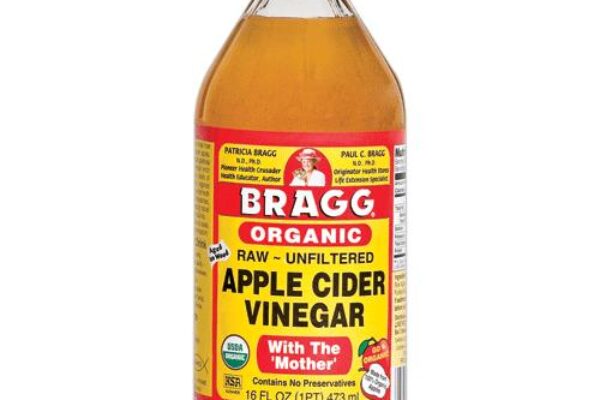
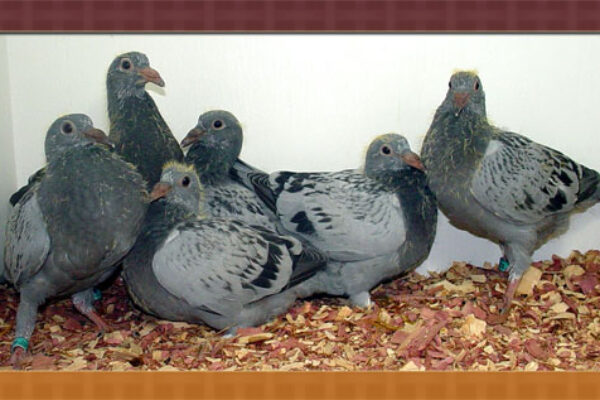
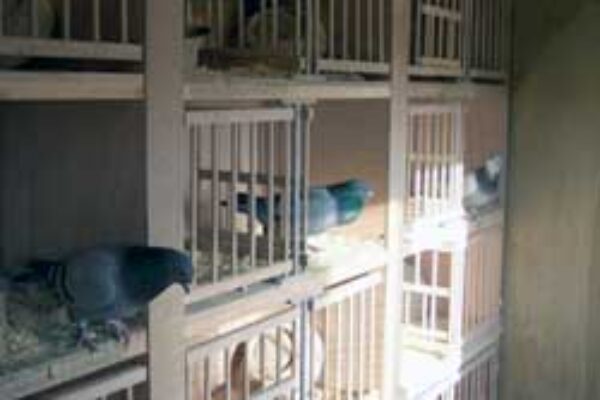
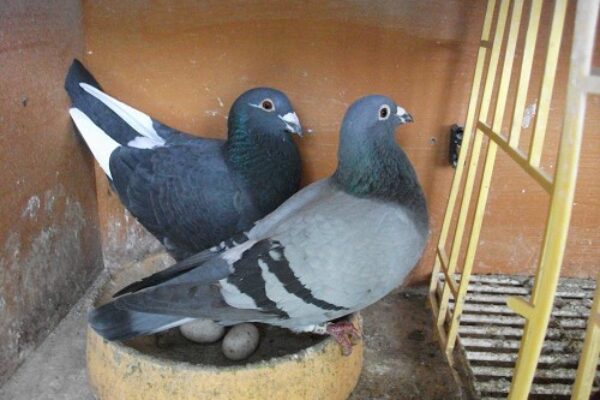
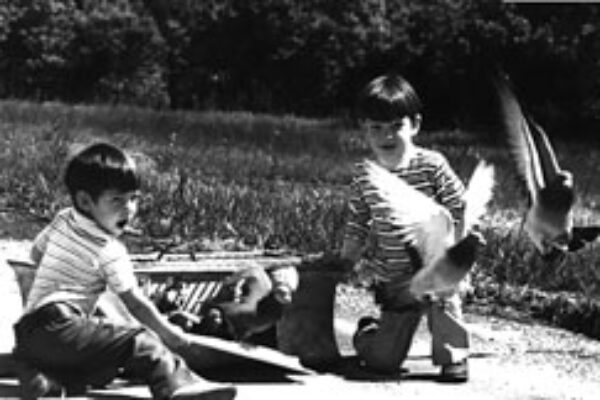


Hi,
Please could you help with some dosage instructions. Could you could give me the dosage amounts of how many parts liquid Sulfamethazine to how many parts water to administer to my racing pigeons please.
Many thanks for your help
Kind regards
George